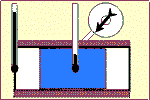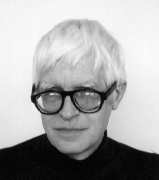
|
Department of process engineering U218
Research project: Waffle baking
|
 |
Preface and links:
Project "Hydrophobierung and biologische Abbaubarkeit
von Materialien aus nachwachsenden Rohstoffen" ,
was initiated in 1996 at TU Dresden,
Institute fur Lebensmittel und Bioverfahrenstechnician
by Prof.Lothar Linke.
This project is a good example of cooperation between Germans (TU Dresden
/supervisor/, Ingenieurburo dur Nahrungsgutertechnician
IBN GmbH Dresden) and Czechs (
ICT Prague, and
CTU in Prague).
The project is supported by Deutsche Bundesstiftung Umwelt
.
Our contribution is oriented on the mathematical modelling of the process of waffle baking:
- Process description
- Mathematical models
- Parametric identification
- Results
- Technological impacts and open questions
Abstract:
Physical models describing baking of the starch based biologically
degradable products (dishes, packages, etc.) are suggested and verified
by experiment.
Suggested pressure baking technology is similar to the contact heating
of waffles in a toaster: raw material - water suspension of starch
and additives (e.g. cellulose) - is placed into a closed planar mould and
heated by contact with walls having a constant temperature.
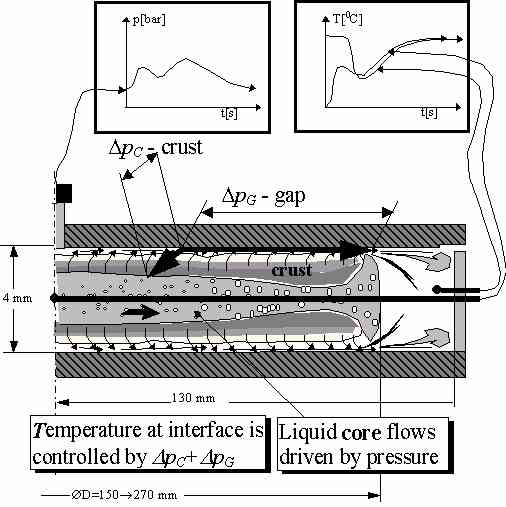
The time courses of temperature, measured at the centre of the narrow gap
between the walls (the gap thickness is only 4 mm) exhibit a local
maximum - suspension temperature increases to cca 120-1400 C,
then decreases and only after some time monotonic rises to the wall
temperature 1800 C! Also the pressure, measured at the centre
of the heated sample is characterised by one or two distinct peaks of
about 2-3 bars. Crust and core models try to explain these non-usual
phenomena assuming that the boiling temperature of free water -
and thus the temperature of suspension- is controlled by the pressure
of the evaporated steam. Three phases of thermal processing are
analysed separately:
- The first phase is heating of a more or less
homogenous layer of water suspension up to the onset of boiling.
- The second phase is characterised by evaporation of free water and by
formation of a growing solid crust. At the same time the liquid core
expands, driven by pressure of steam, which leaves the crust-core
interface and flows through the porous crust and along the walls of
the mould. The friction loses in the crust and in the interstitial
spaces at the wall determine pressure at the crust-core interface,
and are manifested as the first peak of recorded pressure.
- When the crust is fully developed and the expansion stops, the
last phase of heating, accompanied by the evaporation of the remaining
bound water, begins. The sample temperature no longer depends on
the boiling temperature and steadily approaches the temperature of wall.
The second peak of pressure that was sometime observed can be ascribed
to the non uniform distribution of pressure along the surface of sample.
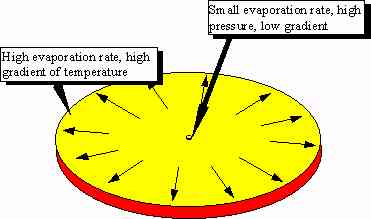
The lowest pressure (approximately atmospheric pressure) must be at
the periphery, but a low pressure means a low temperature of boiling,
therefore a large difference between the temperature of wall and the
temperature of the crust-core interface. Thus the temperature gradient
and the crust growth rate is greatest at the periphery of the
baked sample and just there the solid crust is soonest developed.
This firm peripheral crust closes the remaining liquid suspension inside
the sample and prevents its further expansion, which causes the pressure
increase.
Mathematical models
Simplest mathematical models are crust-core integral models,
describing the whole sample
in terms of mean temperature, mean pressure, volume of sample and
mean thickness of crust as functions of time.
This integral model forms a basis for the shell element, which can
be used in a finite element program,
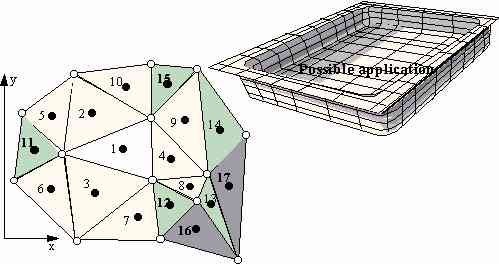
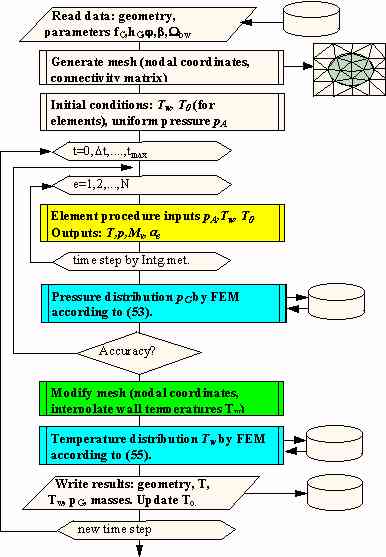
More details, concerning transversal temperature, pressure and moisture profiles, are
obtained by two dimensional models using finite difference methods. Some results
(temperature and crust thickness as functions of time) are
shown in Fig.
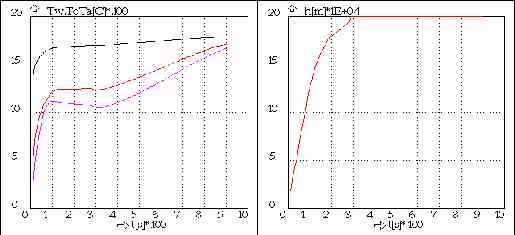
Technological impacts and open questions
Even if the theoretical analysis and numerical simulation of baking process has not been fully completed and a match with experimentally measured data is not excellent, some conclusions can be drawn:
- Baking process depends significantly on the amount of bounded water and on the strength (energy)
of water-solid bond. Therefore useful information about the influence of raw material properties
(composition of suspension) on the baking process can be obtained from drying curves (drying experiments).
-
Pressure of evaporated steam is significant and has to be respected even in the simplest model of mould baking.
-
Pressure drop is determined by the path of escaping steam. There are two principal possibilities:
- Flow through the crust in the transversal direction and then through a narrow gaps - microchannels - along the heating plate.
- The second possibility is that the steam flows prevalently in the longitudinal direction
through the porous crust.
Numerical models indicate on the basis of comparison with experimental data,
that the second mechanism - steam leaving the waffle in the longitudinal direction - is improbable.
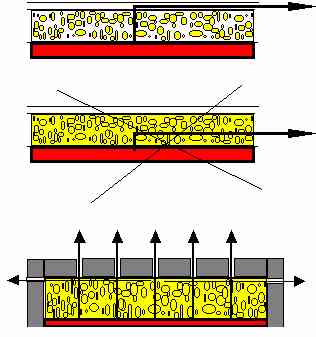
If it would be so, the time courses of pressure should exhibit very fast initial growth and this phenomenon
was not observed. This conclusion is only preliminary, and should be verified experimentally.
However, if it is true, the properties of mould surface /roughness/ have to be significant.
It would offer many possibilities how to improve uniformity of baking by some technical and technological
means, e.g., by using perforated or wrapped contact surface, thus allowing steam to leave the crust
without significant increase of pressure and temperature during the second phase of baking
(free water evaporation).
- Numerical experiments indicate, that the product is baked most intensively near the periphery and
not at the centre (the evaporation is faster in the part, where the pressure of steam is lowest).
This could explain the strange second peak of pressure, that was observed in some experiments.
It seems that this effect can be a limiting factor of the processed product size.
- Mathematical models enable to predict the baking time and its dependence on the thickness
and other geometrical parameters of product.
This project is far from being finished, and the research, coordinated by TU Dresden
continues.
@TEC: 3. 3.2003
Change language to


 peoples
peoples


 mailto: Zitny
mailto: Zitny



